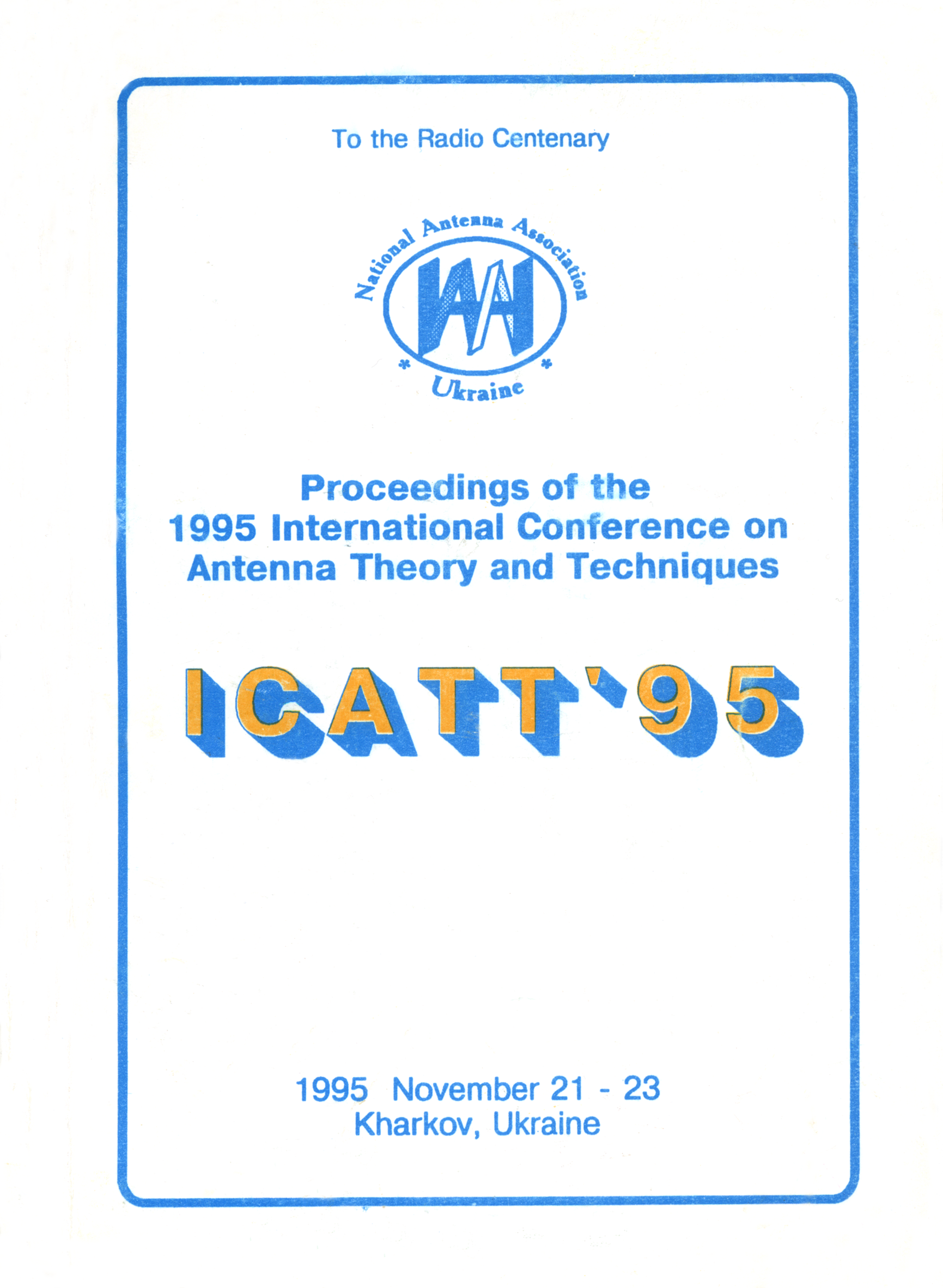Full-wave electromagnetic model of ortho-mode transducer
DOI:
https://doi.org/10.1109/ICATT.1995.1234172Abstract
An attempt to improve the synthesis algorithm and construction of the ortho-mode transducer with square input and standard output waveguides presented in the paper of T. Sieverding and F. Arndt, "Field theoretic CAD of open or aperture matched T-junction coupled rectangular waveguide structures" (IEEE Trans. Microwave Theory Tech., vol. 40, pp. 353-362, Feb. 1992) was made. The generalized S-matrix technique is in the core of the design of the composite structure, but instead of the simple method of the direct mode matching providing key-building block S-matrices virtual decomposition technique and "LSE-LSM scalarization" were applied. An essentially vector device is presented as a sequence of two or more elements that are discontinuous only along one transversal axis and connected by virtual waveguides. It permits to use the technique of "LSE-ISM scalarization". Its main idea consists in the reduction of a vector three-dimensional diffraction problem with the basis in TE- and TM-modes to two scalar problems with the basis in LSE- and LSM-modes. Besides of the evident advantage connected with the quadratic decrease of the inverted matrix order, this procedure permits to use the highly efficient numerical-analytical techniques for the solution of the key scalar problems. For the given transducer the key-problems are 2-D Dirichlet and Neumann ones for a tee-junction of rectangular waveguides, symmetric step, and symmetric bifurcation of a rectangular waveguide by a semiplate of finite thickness.
Having achieved the maximum possible matching of the TE01-mode by a variation of the strip position in the output straight channel, the minimum return loss for the side arm is gained by choosing the parameters of the capacitive diaphragm in the side arm. A stepped transition can be made by means of the computer optimization of the return loss in the straight arm. The transducer design and optimization were carried out using the system of electromagnetic simulation of microwave waveguide devices SES-04.
The matching diaphragm permits to decrease the return loss for the TE01-mode from 18 to 40 dB in the center of the band, and a computer optimization of the stepped transition makes the return loss for the TE10-mode resonant with the maximum value of 48 dB. The ideal isolation between channels can be spoiled only by an imperfect manufacturing.
For the manufactured transducer, at the central frequency 10.3 GHz in the band of ±0.5 GHz the isolation between the channels was 18 dB, direct loss was 0.28 dB.
The obtained results demonstrate the efficiency of the proposed method for the design and computer optimization of complicated microwave devices and a considerable improvement of the transducer characteristics with matching elements.

